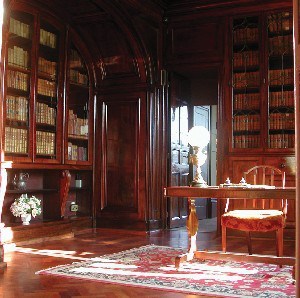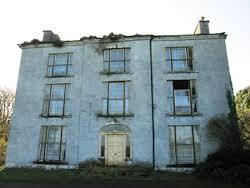Pam Lecky's Blog, page 39
November 28, 2015
Ireland’s Eye: Murder or Victorian Prejudice?
 Howth Harbour and Ireland’s Eye
Howth Harbour and Ireland’s EyeThere is a small island, situated just off the north Dublin coastal town of Howth, that is as famous for its outline, as it is for a ‘murder’ in 1852.
William Bourke Kirwan was a Dublin miniaturist and anatomical artist. He married Maria Louisa Crowe in 1840. On the surface William Kirwan lived a charmed life. He was a prosperous businessman, and a successful artist with a charming and handsome wife. The only fly in the ointment was that there were no children from the marriage. In the summer of 1852, the couple rented rooms at the seaside village of Howth. While there, they took several boat trips out to Ireland’s Eye, where Kirwan spent his time sketching and Maria liked to go swimming.
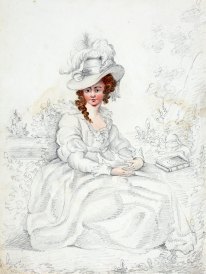 Mrs. Kerwin sketched by her husband NLI ref. 2085 TX 16
Mrs. Kerwin sketched by her husband NLI ref. 2085 TX 16On the 6th of September, William and Maria went to the island again for the day. Other visitors to the island saw and spoke to them and they were even offered lifts back to Howth, but both said that they were waiting for the evening boat to fetch them.
When Patrick Nangle, the boatman arrived, William Kirwan was standing on the shore alone. He told Patrick he hadn’t seen Maria for hours and had been searching for her. The pair continued to search until it was almost dark. It was Patrick who discovered Maria’s body lying on the rocks in a cove known as the Long Hole. It was a tragic accident – or so everyone initially believed.
The rumour mill began to work. William and Maria had been overheard having arguments in their lodging in Howth, and a neighbour from Merrion Street said that William used to beat her (which her mother, under oath, denied). Eventually, suspicion turned in William’s direction. When the Dublin Metropolitan police came to arrest him, the same day Maria’s body was exhumed in October, they discovered his mistress in the house on Merion Street, with some of their 7 children – Kirwan had been leading a double life!
 Long Hole
Long HoleThe trial, which began on 8th December 1852, was a sensation and the crowds so large that the street outside Green Street courthouse was blocked all day. The trial lasted 3 days and was reported widely in the international press. The prosecution made a great play on the fact that William had a second family and claimed that his wife had recently found out and that was why William had murdered her. However, during the trial, witnesses for the Defence claimed that Maria had known all along about her husband’s mistress, Miss Kenny. Miss Kenny made a statement to the effect that the women had known about each other, but it is unclear if this was made known to the jury. The medical witness said that although the body was decomposing by the time he examined it, there were no signs of physical trauma other than those you would expect to see if a body was washed up on the rocks. It also transpired that Maria was epileptic (her maid recounted seeing her having seizures) and the doctor admitted that she could well have had a seizure while swimming.
The jury was discharged and after twenty minutes came back to say they could not envisage reaching an agreement. The judge told them to try again and when they still couldn’t agree he said that they would have to be locked up for the night without food (!!) until they reached a decision. Thirty minutes later they came back with a ‘Guilty’ verdict (which is hardly surprising). The following day, William was found guilty and sentenced to hang and in the dock he proclaimed his innocence. Perhaps there was a general unease about the verdict but eventually Lord Eglinton, the then Lord Lieutenant of Ireland, commuted the sentence to penal servitude for life. William served 27 years in Spike Island prison off the coast of Cork. He made frequent petitions to be released and was finally released on Licence in January 1879 and went to Queenstown (or Cobh in Cork) and boarded a ship to America to join his mistress and children.
To this day, the Kirwan trial has split opinion. Some say he was a victim of Victorian moral conservatism and that his wife drowned after going swimming too soon after eating, others are convinced that he took the opportunity to get rid of his wife by making it look like an accident so that he could marry his mistress.
Unfortunately, we will never know – Ireland’s Eye will keep its secret.


November 27, 2015
A Conversation with Author, Helen Hollick

Today in the Library we have Helen Hollick who has dropped in to say hello and to share some insights into her life as an author.
Thanks for dropping by, Helen, tell us a little about yourself:
H ello! I am Helen Hollick, I live on a thirteen-acre farm in Devon, England, although until three years ago I lived in a north-east London suburb – I managed to Escape To The Country – literally as we found our house through the British TV show with the same name!
ello! I am Helen Hollick, I live on a thirteen-acre farm in Devon, England, although until three years ago I lived in a north-east London suburb – I managed to Escape To The Country – literally as we found our house through the British TV show with the same name!
I wrote pony stories as a teenager, moved to science-fiction and fantasy, and then discovered historical fiction. Published for over twenty years with my Arthurian Pendragon’s Banner Trilogy, and the 1066 era, (Harold the King – UK edition 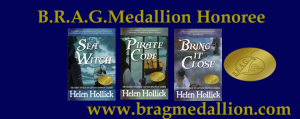 title/I Am The Chosen King – US edition title). I became a ‘USA Today’ bestseller with Forever Queen (titled A Hollow Crown in the UK). I also write the Sea Witch Voyages, pirate-based fantasy adventures – if you enjoyed the Pirates of the Caribbean movies, you’ll love meeting my Captain Jesamiah Acorne.
title/I Am The Chosen King – US edition title). I became a ‘USA Today’ bestseller with Forever Queen (titled A Hollow Crown in the UK). I also write the Sea Witch Voyages, pirate-based fantasy adventures – if you enjoyed the Pirates of the Caribbean movies, you’ll love meeting my Captain Jesamiah Acorne.
As a supporter of Indie Authors I am Managing Editor for the Historical Novel Society Indie Reviews, and inaugurated the HNS Indie Award.
Did you read much as a child? Are you an avid reader now? Do you prefer books in your own genre or are you happy to explore others?
I was a lonely child, with few friends and extremely lacking in self-confidence – but I discovered that other world of imagination from a very early age, so I actually had dozen of friends, albeit fictional ones. But that has stood me in good stead for ‘meeting’ my own characters! I don’t read as much now because I have a sight deficiency so reading is more difficult – but thank goodness for Kindle where the font can be enlarged! I read most things except horror – I love a good mystery!
Are you self-published or traditionally published?
Both. I am traditional in the US with my ‘serious’ historical fiction and indie in the UK.
Which genre do you write in?
I write historical fiction and pirate-based nautical adventure with a touch of fantasy
Who has been the biggest influence on your writing?
Rosemary Sutcliff.
Has your country of origin/culture influenced your writing?
I suppose being British I have always been interested in the history and the past, so in that sense, yes, otherwise no not really.
What part of the writing process do you find most difficult? How do you overcome it?
Marketing! Being an indie author the marketing is all down to me – and while I love social media, blogging, etc., it can sometimes overtake the actual writing. I try to stick to marketing in the morning and writing in the afternoon – except life has a tendency to interrupt the day … especially living here in Devon on a farm!
Do you have a favourite time of day to write?
No – although I’m often more productive of an evening.
What is the best thing about being an author? And the flipside – what is the worst?
Meeting so many wonderful people, either for real or ‘virtually’. The worst – being indie, is the cost of producing good quality books. It can be very expensive.
Is social media an essential chore or something you enjoy? Which forum do you prefer?
I regard Facebook as my ‘shop window’, Twitter I use for more social contact and my blog is a bit of both. I tend to stick to these three, although I do have other accounts elsewhere.
If you weren’t an author, what would you be up to?
Mucking out horses and mending fences round the farm I expect!
It’s the last day and the earth is facing oblivion – what book would you read?
Mark of the Horselord, by Rosemary Sutcliff. I’ve read it dozens of times and I still cry at the end!
Please tell us what you are working on at the moment.
I am finishing the fifth Voyage in my Sea Witch Series – On The Account (hopefully published early 2016) and I have also been commissioned to write a non-fiction book about Pirates… watch this space!
Thanks so much, Helen.
If you’d like to know more about Helen and her books check out the follow ing:
ing:
Buy from Amazon : viewAuthor.at/HelenHollick
Website: www.helenhollick.net
Blog: www.ofhistoryandkings.blogspot.com
Facebook: www.facebook.com/HelenHollickAuthor
Twitter: @HelenHollick


November 19, 2015
A Conversation with Author, David J. Robertson
Today in the Library we have David J Rob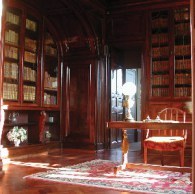 ertson, who has dropped in to say hello and to share some insights into his life as an author. So pull up a chair and join the conversation …
ertson, who has dropped in to say hello and to share some insights into his life as an author. So pull up a chair and join the conversation …
You are very welcome, David, please introduce yourself.
Hi, I’m Dave Robertson, a … year old, (sorry the number lock seems to be broken!), bloke from the Black Country. I was an engineering designer until the heart attack, so I retired early to follow what my heart desires (sorry – bad pun!) I decided to write – properly – not just for fun as I had done for years. 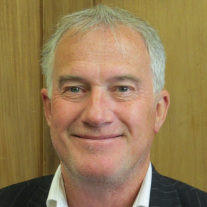 That’s not to say that I don’t enjoy it – I do, I love it. So, what do I write?
That’s not to say that I don’t enjoy it – I do, I love it. So, what do I write?
Well, I’ve done quite a bit of flash fiction and there’s a children’s book in the pipeline – about my dog Misty. So keep your eyes peeled for that. A second Misty book is floating about. (Which was actually the first until things got complicated – don’t ask!) There are even the faint scribbling’s of a third – I must really have got the bug.
And of course there’s the novel. Haven’t we all got one somewhere? It unfortunately needs attacking drastically with the red editing pen. It’s a humorous (allegedly) science fiction/fantasy adventure. I only started it in 2006 so it must be nearly finished by now.
Did you read much as a child? Are you an avid reader now? Do you prefer books in your own genre or are you happy to explore others?
My first reading memory is The Secret Seven series by Enid Blyton, progressing to Biggles and literally anything literal that I could get hold of.
Life unfortunately gets in the way of reading – until recently reading was relegated to a holiday activity (I have been known to take 14 books on a 14 day holiday – and not thin tomes either!)
I will read anything that interests me, fact, fiction, autobiography.
Are you self-published or traditionally published?
My first children’s book ‘DOGNAPPED!’ will be self-published by Matador on 28th April 2016.
Which genre do you write in and why?
Children’s 6 – 10. A long planned sci-fi/fantasy novel. I write short stories and flash fiction. A lot of what I write could be described as humorous (I hope) but is not restricted to that genre.
Who has been the biggest influence on your writing?
Whoever’s book I was reading when I thought: ‘This is shite, I could do better than that!’ It really was that bad and is only memorable by the fact that I have no idea what it was called or who wrote it.
Has your country of origin/culture influenced your writing?
Only in the sense of ‘you write what you know’ and I am familiar with the Black Country, the canals, the accent – you really should read my flash fiction piece, ‘Th’auld pol on th’cut.’ (My old friend on the canal) – it is on the website at www.mistybooks.net
However, I recently wrote 2 pieces of flash fiction in a Texan dialect (well southern American anyway – in case some pedantic soul argues that it sounds more like a voice from a little known region of eastern Arkansas!) purely because I was holidaying there at the time, (yes, sadly I do also write on holiday) so perhaps it is fairer to say that I am influenced by my surroundings.
What part of the writing process do you find most difficult? How do you overcome it?
The editing – I hate it. It’s not something that can be overcome in my experience. It has to be done and done properly. Anything above draft three is a particular balls ache! I usually take at least seven!
Do you have a favourite time of day to write?
No. I don’t set aside a time, day or week for that matter. I write when in the mood which means that my inane scribbling’s can be weeks apart. But once I do start I rarely stop until the piece is finished. It’s in me – it has to come out. You can’t beat paraphrasing John Lee Hooker.
What is the best thing about being an author? And the flipside – what is the worst?
The best – Writing something that you think – ‘Yes! That’s exactly the point, experience, emotion that I was trying to convey!’
The worst – It happens a lot, when someone says ‘Oh you could have the hero/heroine/villain/someone who is not even in the story, do this/do that/do the bloody other. And why didn’t you name one of the characters after me?’
Is social media an essential chore or something you enjoy? Which forum do you prefer?
I’m on Facebook, but that’s a relatively new thing. I find it strangely addictive, but I guess in time the novelty will wear off.
I also have a Twitter account – what’s that about!?
If you weren’t an author, what would you be up to?
I recently retired early to do the writing thing properly, so I would still be an engineering designer.
It’s the last day and the earth is facing oblivion – what book would you read?
Catch 22 – again! Brilliant – but Joseph Heller’s second book was crap (in my opinion).
Please tell us what you are working on or your latest published work.
 My first children’s book ‘DOGNAPPED!’ will be self-published by Matador on 28th April 2016. (ISBN 9781785891441), price £8.99. Distributor: Orca Book Services 01235 465521 email tradeorders@orcabookservices.co.uk
My first children’s book ‘DOGNAPPED!’ will be self-published by Matador on 28th April 2016. (ISBN 9781785891441), price £8.99. Distributor: Orca Book Services 01235 465521 email tradeorders@orcabookservices.co.uk
I shall be adding a shopping page to my website shortly so that it can be purchased direct. Above is the provisional book cover – thanks to Ian R Ward for the wonderful pictures www.ianrward.co.uk
So – that’s me folks! Catch my blogs and stories at www.mistybooks.net, read my tweets at @misty_books and catch up with me on Facebook at mistybooks2015


November 9, 2015
A Conversation with Author, Annie Whitehead
 Today in the Library we have Annie Whitehead, who has dropped in to say hello and to share some insights into their life as an author. So pull up a chair and join the conversation …
Today in the Library we have Annie Whitehead, who has dropped in to say hello and to share some insights into their life as an author. So pull up a chair and join the conversation …
Yo
 u are very welcome, Annie, please introduce yourself.
u are very welcome, Annie, please introduce yourself.I’m the mother of three grown-up children and I work part-time as a pre-school music teacher. I graduated in history, though, and history has remained my first love and my passion.
Did you read much as a child? Are you an avid reader now? Do you prefer books in your own genre or are you happy to explore others?
I actually didn’t read that much as a child, because I could rarely find anything that engaged my interest. When I was about 11 or 12, I discovered the world of historical fiction and then I found that I could happily disappear into another world for hours. I am a very slow reader though, so it takes me a while to get a book finished. These days I read a lot of non-fiction and novels of pretty much any genre apart from horror – I scare really easily!
Are you self-published or traditionally published?
Interesting question! When I finished my novel To Be a Queen it was accepted by a literary agent who immediately asked me to sign a contract and get working on a sequel. I was, as you can imagine, rather excited. Time went by, however, and I heard nothing more. This, as I’ve subsequently discovered, is not uncommon. So, since I had the completed Mss, I decided to self-publish. One really nice side-effect of that decision is that it has brought me into contact with so many other writers and I now feel like part of a wider writing community.
Which genre do you write in and why?
When I was a student, I sat and listened, particularly in my “Dark Ages” seminars, and thought about the interesting characters and how one day I would write their stories. Eventually, when my children were old enough and I had a bit of time, I sat down and wrote those stories which became my three historical novels. Two years ago I was a prize-winner in a novel writing competition and the judges, among them Fay Weldon, encouraged me to complete that particular book. I’m currently working on it as part of the NaNoWriMo challenge. It’s not historical fiction and I’m not sure whether I will self-publish or try to get it mainstream published, simply because I’m taking my writing in a different direction.
Who has been the biggest influence on your writing?
In terms of the historical aspect, it has to be my tutor from my college days, Professor Ann Williams, who was one of those teachers we all meet if we are lucky – she simply brought the subject alive for me, made it interesting and enjoyable, and we are still in touch 30 years later. In terms of writing, I think I was inspired by three great historical fiction writers: Sharon Penman, Helen Hollick and Elizabeth Chadwick. They all write about strong characters but always succeed in keeping those characters true to their historical setting, and their history is dependable – they do their research thoroughly!
Has your country of origin/culture influenced your writing?
One of the most awkward things for me to answer is always “Where are you from?” I am British, but I was born in Germany and travelled round the world when I was a child because my father was in the armed forces. Even when we returned to England I went to four different secondary schools. If this nomadic childhood influenced my writing at all, it is that I have a very keen sense of what it is like to yearn for ‘home’, be it a place or a concept, and it’s something that a lot of my characters hold very dearly, this notion of belonging, and, conversely, the pain of feeling like an outsider.
What part of the writing process do you find most difficult? How do you overcome it?
First drafts – I find it very difficult to ‘get going’. (Once I have some kind of rough outline down on paper, then I’m happy to play around with it, add new scenes, and even delete whole chunks.) The only way to overcome this is, I’ve found, to schedule it into my diary – “On Wednesday you WILL sit down and work out this plotline.” If it’s in the diary, it has to happen. That’s the theory, anyway …
Do you have a favourite time of day to write?
Straight after breakfast. If I can settle down then, I won’t break again until lunchtime. It takes me a while to get back into things after lunch (mainly because I get distracted by certain social media sites). It also depends on the stage of writing – if I am in ‘final edit’ mode then I barely come up for air and have been known to sit at the computer for 14 hours straight. At these times, I am not nice to know – I have the focus of an Olympic athlete and the social charms of a gorilla with tooth-ache.
What is the best thing about being an author? And the flipside – what is the worst?
The best thing is when the words are falling out onto the page. It is so absorbing and so enjoyable that it is the best kind of ‘mindfulness’ and there are few ways I’d rather spend the day. The flipside is probably the isolation; it can be lonely, not just at the time of writing but at the moment when you decide to share what you’ve produced with the outside world. It’s daunting, because you have no idea whether anyone else will like it and, if you’re a shy person like I am, promoting yourself can feel a little uncomfortable. Typewriters or their equivalent are great places to hide behind!
Is social media an essential chore or something you enjoy? Which forum do you prefer?
It’s both. I feel obliged to plough through my entire newsfeed for fear of missing something and that can be a bind. But I really enjoy interacting with other people. My early nomadic life means that I have friends all over the world and I’ve been able to get back in touch with them through social media. It may be my nature, or simply my age, but I prefer Facebook to Twitter, and that’s all I do – I don’t have an Instagram account. I recently set up an author page on Facebook too, to separate the personal from the professional, although there is always a bit of crossover.
If you weren’t an author, what would you be up to?
Once upon a time I’d have answered “A singer in a rock and roll band”. I have sung professionally, but developed awful stage fright. I’ve given this a lot of thought and I’m fortunate to be able to say that I already do the only other thing I’d enjoy – teaching music and singing to little people. I love teaching and I love music so it’s the perfect combination; I’m freelance, which gives me quite a lot of freedom – I just go in, have a great time with the children, and go home again.
It’s the last day and the earth is facing oblivion – what book would you read?
I’d love to give a sophisticated answer to this one, but the truth is that my favourite book(s) of all time is the Flambards Trilogy by KM Peyton.
Please tell us what you are working on or your latest published work.
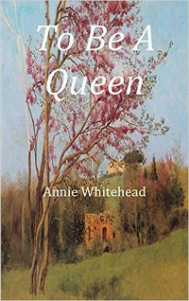 My novel, To Be a Queen, tells the true story of Æthelflæd, Lady of the Mercians, daughter of Alfred the Great. It’s been long-listed for the Historical Novel Society’s Indie Book of the Year 2016, which is very exciting. I’m hoping it will be available in e-book format in the New Year, and shortly after that my second book (title TBC) will be released in paperback. It’s also set in the Anglo-Saxon kingdom of Mercia and will be followed by my final ‘Mercian’ book later on next year.
My novel, To Be a Queen, tells the true story of Æthelflæd, Lady of the Mercians, daughter of Alfred the Great. It’s been long-listed for the Historical Novel Society’s Indie Book of the Year 2016, which is very exciting. I’m hoping it will be available in e-book format in the New Year, and shortly after that my second book (title TBC) will be released in paperback. It’s also set in the Anglo-Saxon kingdom of Mercia and will be followed by my final ‘Mercian’ book later on next year.
To Be a Queen can be bought here:
Amazon.co.uk or here Bookdepository.com
and I can be found on Facebook
and on my blog Annie Whitehead


October 30, 2015
A Conversation in the Library with …
This evening my guest is book reviewer, David Baird, who has kindly agreed to join me in the library for a chat. Pull up a chair and join the conversation …
David – you are very welcome. Would you like to tell us a little about what you do?
The Book Reviewing Process
I run a book blog called David’s Book Blurg and mainly review works of historical fiction 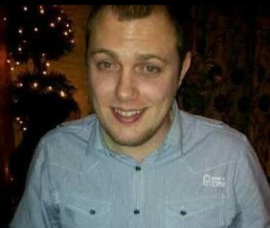 but can quite happily read almost anything. The book reviewing process can actually take a lot longer than you think. It’s also more enjoyable than you can imagine.
but can quite happily read almost anything. The book reviewing process can actually take a lot longer than you think. It’s also more enjoyable than you can imagine.
How did I come to run a blog, you might ask? Well, I’ve been on Twitter a number of years and followed some authors whose work I’d enjoyed. Authors like to communicate via Twitter with fans more than I had imagined. Because of this, I felt a little guilty just leaving a star rating with no actual comments. I’ve always liked the idea of a blog but never thought anything I had to say would be interesting enough. Once I’d settled on the idea of leaving more detailed reviews, I decided I’d found the subject I could blog about! I posted reviews about a couple of books I’d recently read and within a matter of days, I was contacted with my first review request. Since then I’ve never looked back.
The books I review come to me in either one or two ways. First being a book I’ve purchased and want to read, but more often books come to me directly from the author with a request for a review. There are a lot of authors out there who self-publish or self-promote who will kindly gift me a review copy of their book. There’s no catch. It doesn’t have to be a good review (although I’m sure that’s what the author is hoping for); they just want a good down to earth honest review.
It usually takes me around a week to read a book under 400 pages. I know some people who read a lot faster than that, but since I have two little girls at home, I like to make sure I balance my commitments well; family comes first after all. So if it’s a request from an author, I like to agree a deadline with them for the review to be posted
Next up is the good part – where I actually get to read the book :)
When I’m reading I like to make notes, either in a note pad if it’s a hard copy book, or by highlighting text if I’m using my Kindle app. These notes come in very handy when I’ve finished and need to write up my review. I like to get my reviews up quickly so everything is fresh in my head. I write from memory in the first instance, I comment on the things I liked about the book and also the things I didn’t. I then go back and look at my notes and see if I’ve covered everything. Then I summarise my thoughts and try to make people understand how the book made me feel as a reader. My reviews go out on my blog and up on Amazon and Goodreads.
My reviews are honest opinions, some books you just don’t like but you can be honest without being rude. I always find something good in every book I read. If an author has taken the time to write a book the least you can do is take the time and let the author know what you enjoyed about it.
Personally I’ve found book reviewing to be a great way to connect with authors and readers alike and because of this I’ve been introduced to even more wonderful authors whose works I wouldn’t have discovered without my blog.
It’s a great feeling when someone interacts with you about a review you’ve posted, to know that someone has taken the time to read what you’ve written. It’s my own little world and it’s good to feel my reviews are valued.
To see my reviews or to request a review, please check out my website:


October 23, 2015
Competition
All you have to do is post a picture of you reading the book
to the Facebook Page –The Bowes Inheritance.
If you purchased the ebook please show the first page (Prologue) on your Kindle or laptop.
Closing date is 31st October 2015 – best of luck!


October 5, 2015
Finding a Home for my Characters
Louisa Campbell, my female protagonist in The Bowes Inheritance, didn’t materialise out of thin air – she had a past. Back stories give your characters more flesh and bone, so sprinkled throughout my tale, the reader slowly learns about Louisa and her family’s past and where they lived.
As I have family connections and a deep love of the west of Ireland, it was probably inevitable that I would choose this area as the home of this typical Ascendancy family. A crucial part of character development is that I have to be able to visualise their world and to this end, besides being fun, I spend a lot of time on research for all my locations. Without the benefit of time travel, that meant looking up the Landed Estates Register set up by NUI Galway, browsing good old google and checking out Archiseek.com and similar websites.
And I was spoilt for choice …
Here is a small selection of the wonderful old estates, now mostly in ruins, that I discovered. Sadly over 200 houses were lost during the Irish Civil War in the early 1920s, as the houses were often regarded by Republicans as symbols of British imperialism and burnt down.
Cool Park was the home of Lady Gregory, dramatist and co-founder of the famous Abbey Theatre in Dublin.
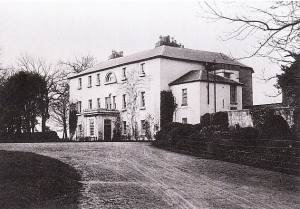
Cool Park
Gortnamona House – frequently visited by Percy French and inspiration for The Woods of Gortnamona. The house is now a ruin.
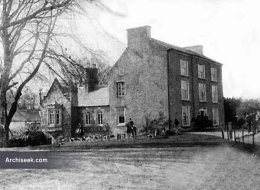
Gortnamona House
Eyrecourt Castle was home to Colonel the Right Hon. John Eyre who was granted the land by Cromwell. He built the house c. 1660. However, by 1883 the estate was insolvent and was offered for sale.
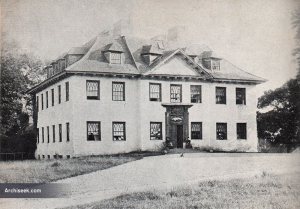
Eyrecourt Castle
Louisa could have been born in any of these houses and perhaps one day she may have returned … but that would be telling.
Images are copyright of Archiseek, and NUI Galway
If this topic is of interest check out:
http://www.landedestates.ie
http://www.NLI.ie
The books of photographer Tarquin Blake. Visit his website http://www.abandonedireland.com to see his amazing work.


September 21, 2015
A Foul Victorian Murder
Are you a witch?
Are you a fairy?
Are you the wife
Of Michael Cleary?
— Children’s rhyme from Southern Tipperary, Ireland
Everyone enjoys a good fairy-ta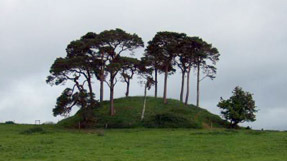 le. Being Irish, I grew up with them and often heard tales of fairy forts and changelings and the consequences of interfering with either. Many cultures around the world believe in fairy abductions when a human child is replaced by a fairy. The theme of the swapped child is common in medieval literature and was often a way for people to explain children thought to be afflicted with unexplained diseases, disorders, or developmental disabilities. But changelings were not necessarily only children. There is a rather grisly tale which took place in Ireland in 1895.
le. Being Irish, I grew up with them and often heard tales of fairy forts and changelings and the consequences of interfering with either. Many cultures around the world believe in fairy abductions when a human child is replaced by a fairy. The theme of the swapped child is common in medieval literature and was often a way for people to explain children thought to be afflicted with unexplained diseases, disorders, or developmental disabilities. But changelings were not necessarily only children. There is a rather grisly tale which took place in Ireland in 1895.
It is the tragic story of Bridget Cleary
Bridget was born around 1870 in County Tipperary, Ireland. She married Michael Cleary, almost ten years her senior, but after the wedding she returned to her parents’ house, while Michael continued to work away from home as a cooper. Bridget’s independence grew. She was attractive, and forthright, with a reputation for a quick wit, and a direct gaze – none of which were common characteristics of young Irish Catholic women. Bridget was an accomplished seamstress and in addition to her income from sewing, she kept hens and sold their eggs. Following the death of her mother, the couple set up home with Bridget’s elderly father, Patrick Boland, in a house reputedly built on the site of a fairy ring fort.
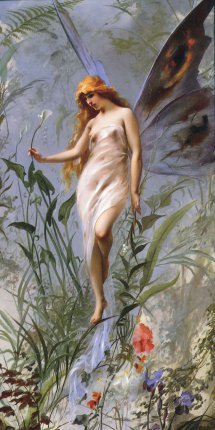 By 1895 the couple had been married about eight years but had no children. Bridget continued her egg selling but often had to walk miles to deliver her eggs. It would appear that after a particularly bad rain soaking, she took ill. Over the course of a few days this seemed to develop into pneumonia or she may already have had tuberculosis. More than a week into her illness, on 13 March 1895, Dr. Crean, the local doctor, visited her at her home. He found her suffering from nervous excitement and a slight bronchitis. She was in bed, but the doctor “could see nothing in the case likely to cause death.” Dr. Crean then gave her some medicine. Father Ryan, who visited Mrs. Cleary on the same Wednesday afternoon, said that her conversation was quite coherent and intelligible. (Above image is Lily Fairy, by Falero Luis Ricardo, 1888)
By 1895 the couple had been married about eight years but had no children. Bridget continued her egg selling but often had to walk miles to deliver her eggs. It would appear that after a particularly bad rain soaking, she took ill. Over the course of a few days this seemed to develop into pneumonia or she may already have had tuberculosis. More than a week into her illness, on 13 March 1895, Dr. Crean, the local doctor, visited her at her home. He found her suffering from nervous excitement and a slight bronchitis. She was in bed, but the doctor “could see nothing in the case likely to cause death.” Dr. Crean then gave her some medicine. Father Ryan, who visited Mrs. Cleary on the same Wednesday afternoon, said that her conversation was quite coherent and intelligible. (Above image is Lily Fairy, by Falero Luis Ricardo, 1888)
Soon Michael Cleary and Bridget’s uncle, Jack Dunne, a seanchai well versed in herb lore, began to circulate the story that Bridget had been taken by the fairies, and the woman in the bed was a changeling. Michael even claimed she was taller and finer than his wife! The next day, Thursday March 14, he went to a herbalist and bought herbs as a “fairy cure.” A traditional remedy for someone “taken” by fairies, was to boil specific herbs in milk. Michael dosed Bridget repeatedly that evening, but only by having his wife physically restrained by family members. Witnesses said she was also held over the fire and questioned rigorously as to whether she was really Bridget Cleary.
On the morning of Friday March 15th, Michael fetched the priest, who performed mass in Bridget’s bedroom, where Bridget was lying in bed. Michael told the priest that he had not been giving his wife the medicine prescribed by the doctor, because he had no faith in it. That night, according to Bridget’s cousin, and other family members who were present, she was dressed and brought to the kitchen, where an argument about fairies ensued. Again Michael repeatedly questioned Bridget. “Are you Bridget Cleary, my wife, in the name of God?”
Eventually she refused to answer any more questions and in a rage Michael flung her to the floor, and half strangling her, forced some bread and jam down her throat. He then stripped her down to her chemise, fetched a lighting stick out of the fire and held it to her forehead (a gesture meant to chase out the fairy). Her chemise caught fire and whether this was deliberate or not is unknown, but then he drenched Bridget in paraffin oil from a lamp, until she was consumed with flames. He stood over her and stopped the other members of the family from helping her.
One witness testified that when he cried out to Michael Cleary “For the love of God, don’t burn your wife!”
Cleary replied: “She’s not my wife. . . . She’s an old deceiver sent in place of my wife. She’s after deceiving me for the last seven or eight days, and deceived the priest today too, but she won’t deceive anyone any more. As I beginned it with her, I will finish it with her! . . . You’ll soon see her go up the chimney!”
In the early hours of the following morning, Michael asked a relative to help bury Bridget’s twisted, and partially incinerated corpse. They wrapped the body in a sack and carried it to a boggy area about a quarter of a mile away. Michael threatened all of the witnesses but by the 16th March, rumours were beginning to circulate that Bridget was missing. Some time afterwards, it was reported to the local priest that Bridget had been burned to death by her husband and other family members. The priest went to the police. On the 22nd of March, after a week of speculation, newspaper reports, and intensive searching, the Royal Irish Constables discovered the body in its shallow grave. A coroner’s inquest the next day returned a verdict of death by burning. In the intervening time, Michael Cleary, in the company of his father-in-law and neighbours, spent three nights at the fairy fort at Kylenagranagh, convinced that he would see his wife emerge on a white horse, at which point he would cut her free, and rescue her from the fairies.
The police arrested nine people, including Michael and Bridget’s family members, neighbours and friends, in connection with the murder. All nine were indicted on charges of “wounding”. Michael Cleary served 15 years for manslaughter after which he emigrated to Canada. It is debatable whether Michael actually believed her to be a fairy – many believe he concocted a “fairy defence” after he murdered his wife in a fit of rage, and he maintained until his death that he did not murder his wife.
Her death and the publicity surrounding the trial were regarded as being politically significant at a time because Irish Home Rule was an active political issue in England. Press coverage of the Cleary case occurred in an atmosphere of debate over the Irish people’s ability to govern themselves and worries were expressed about the credulity and superstition of rural nationalist Catholics as a result.
Unsurprisingly, Bridget’s murder has been the inspiration for many books, myths and plays.
Check out:
Angela Bourke’s “The Burning of Bridget Cleary” and
“The Cooper’s Wife is Missing” by John Hoff and Marian Yeates


August 28, 2015
Angel Meadow – Hell upon Earth!
In my novel, The Bowes Inheritance, there is a brief glimpse of life in Angel Meadow, Manchester, where Fenian sympathies ran high and lawlessness prevailed.
 The area was undoubtedly named for its idyllic scenery on the banks of the River Irk. However, the Industrial Revolution with its factories and workers’ houses soon swallowed up those verdant pastures. At the height of its notoriety, it became known as one of the worst slum districts in the United Kingdom. Today, regeneration has restored some of the area and Angel Meadow is now a public park – a far cry from a nineteenth century, rather chilling, description of the area:
The area was undoubtedly named for its idyllic scenery on the banks of the River Irk. However, the Industrial Revolution with its factories and workers’ houses soon swallowed up those verdant pastures. At the height of its notoriety, it became known as one of the worst slum districts in the United Kingdom. Today, regeneration has restored some of the area and Angel Meadow is now a public park – a far cry from a nineteenth century, rather chilling, description of the area:
“The lowest, most filthy, most unhealthy, and most wicked loca
lity in Manchester is called Angel Meadow. It lies off the Oldham Road, is full of cellars and is inhabited by prostitutes, their bullies, thieves, cadgers, vagrants, tramps, and, in the very worst sites of filth, and darkness.” (Image copyright Manchester Libraries)
For the period 1888-1890 the death rate was 50.9 per thousand per annum, while the average for all of England was less than 19.
Destitute Irish made up most of the 20,000 to 30,000 who lived in Angel Meadow. They had fled the famine in Ireland and had come to Manchester, the beating heart of the Industrial Revolution, looking for work and a roof over their heads. However, most lived in terrible conditions, often in the cellars which were dank and disease-ridden. The following is a description of such an abode, from about 1850:
“The place was dark, except for the glare of a small fire. You could not stand without stooping in the room which might be about twelve feet by eight. There were at least a dozen men, women and children on stools, or squatted on the stone floor, round the fire and the heat and smells were oppressive… the inmates slept huddled on the stones, or on masses of rags, shavings and straw which were littered about. There was nothing like a bedstead in the place.”
The Scuttler Gangs
Living in grim conditions, with little space, territorial fighting soon flourished with rival gangs (called Scuttlers) regularly engaging in violence. In an article he wrote for the Manchester Guardian in 1890, Alexander Devine attributed scuttling to four major causes: lack of parental control; lack of discipline in schools; base literature (such as the sensationalist ‘penny dreadful’ novels about pirates and highwaymen) and the monotony of life in Manchester’s slums.
The ‘Angels’ gang from Angel Meadow became so notorious that the police would often think twice before entering the area. The gangs gave status, excitement and respect to individuals who had little else. The Scuttlers were easy to spot. They used soap to flatten down their long fringes over the left eye, the so called ‘donkey fringe’ and closely cropped the back and sides of their hair. They often sported peaked caps and silk neckerchiefs. The flaps of their coat pockets were cut into peaks and were buttoned down. They wore bellbottomed trousers, and some had pointed, metal tipped clogs on their feet. The clogs weren’t just a simple fashion statement they could inflict vicious wounds when kicking a rival. Each gang had its own distinctive colours and look. This attention to appearance served a practical purpose. In the heat of battle, it helped distinguish friend from foe.
were cut into peaks and were buttoned down. They wore bellbottomed trousers, and some had pointed, metal tipped clogs on their feet. The clogs weren’t just a simple fashion statement they could inflict vicious wounds when kicking a rival. Each gang had its own distinctive colours and look. This attention to appearance served a practical purpose. In the heat of battle, it helped distinguish friend from foe.
Unlike the gangs of today, the Scuttlers had little interest in robbery or extortion. Their primary purpose was defending their identity by battling other Scuttler gangs in huge brawls, one reputedly numbering 500 people in 1879. They policed their territories and meted out blunt retribution to anyone who crossed them. The gangs flourished up to about 1900 but then slowly died out, mainly due to the clearing out of some of the worst slums. The setting up of Working Lads’ Clubs, the spread of street football and the advent of the cinema are all attributed to getting the young men away from the gangs. The football clubs deliberately targeted the young disaffected youths of Scuttle gang age; one such club was West Gorton, now known as Manchester City FC.
For more information on this topic read, The Gangs of Manchester, by Andrew Davies, or take a look at http://www.friends-of-angel-meadow.org.


August 6, 2015
Strange Connections: From the American Civil War to James Bond
The Fenian dynamite campaign (1881 to 1885) forms part of the backdrop to my novel, The Bowes Inheritance. During my research I discovered some intriguing nuggets of information.
It appears that both sides in the American Civil War (1861-65) engaged in terrorist tactics, planting landmines and clockwork explosives to deliberately injure civilians and damage property to invoke terror. The American Fenians were only too happy to look back and borrow the idea, and when Mr. Alfred Nobel was good enough to invent dynamite in 1867, an easy means of causing mayhem was born.
A Professor Gaspodin Mezzeroff (who was, in fact, an Irishman but claimed to be Russian), under the instruction of Jeremiah O’Donovan Rossa, set up the Brooklyn Dynamite School in New York, where he trained students in do-it-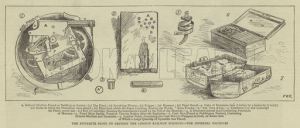 yourself bomb making ($30 per 1 month course). The British police became aware of the American Fenians coming into Britain with their deadly ‘infernal machines’ and subsequently monitored the ports. This pushed the bomb making underground with the explosives being put together in kitchens and backrooms throughout the Irish enclaves of Britain.
yourself bomb making ($30 per 1 month course). The British police became aware of the American Fenians coming into Britain with their deadly ‘infernal machines’ and subsequently monitored the ports. This pushed the bomb making underground with the explosives being put together in kitchens and backrooms throughout the Irish enclaves of Britain.
In 1883, the British Metropolitan Police set up a small unit within the Criminal Investigation Department called The Special Irish Branch, in an effort to curb the Fenian threat. This would later become known as Special Branch. Ironically, it was a Kerryman, by the name of William Melville, who was one of the founding members of The Special Irish Branch and his remit included dealing with anarchists of all nationalities. In 1893 he became Superintendent and ten years later he was secretly recruited to lead a new intelligence section in the War Office, which eventually became known as M05.
Melville, using the alias William Morgan, ran intelligence operations from a flat in London, using his knowledge and contacts from his years running Special Branch. In 1916, MO5 became MI5 and it is speculated that Melville then became the head of the British Secret Service with the code name “M”
… sound familiar?
If you’d like to know more about the Fenian terrorists, get comfortable with a vodka martini (shaken not stirred) and take a peek at Shane Kenna’s book – War in the Shadows.



